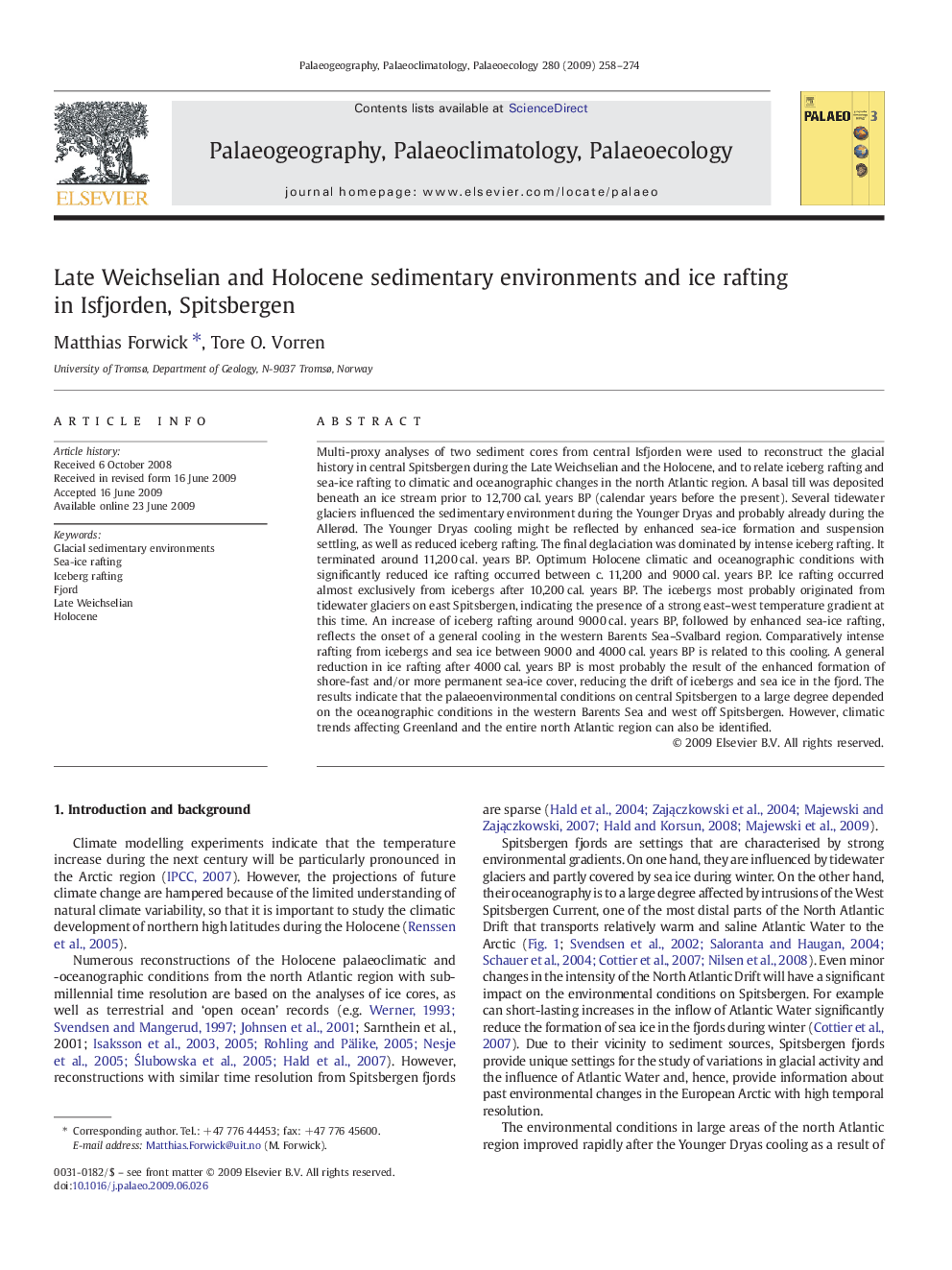| کد مقاله | کد نشریه | سال انتشار | مقاله انگلیسی | نسخه تمام متن |
|---|---|---|---|---|
| 4468049 | 1622297 | 2009 | 17 صفحه PDF | دانلود رایگان |

Multi-proxy analyses of two sediment cores from central Isfjorden were used to reconstruct the glacial history in central Spitsbergen during the Late Weichselian and the Holocene, and to relate iceberg rafting and sea-ice rafting to climatic and oceanographic changes in the north Atlantic region. A basal till was deposited beneath an ice stream prior to 12,700 cal. years BP (calendar years before the present). Several tidewater glaciers influenced the sedimentary environment during the Younger Dryas and probably already during the Allerød. The Younger Dryas cooling might be reflected by enhanced sea-ice formation and suspension settling, as well as reduced iceberg rafting. The final deglaciation was dominated by intense iceberg rafting. It terminated around 11,200 cal. years BP. Optimum Holocene climatic and oceanographic conditions with significantly reduced ice rafting occurred between c. 11,200 and 9000 cal. years BP. Ice rafting occurred almost exclusively from icebergs after 10,200 cal. years BP. The icebergs most probably originated from tidewater glaciers on east Spitsbergen, indicating the presence of a strong east–west temperature gradient at this time. An increase of iceberg rafting around 9000 cal. years BP, followed by enhanced sea-ice rafting, reflects the onset of a general cooling in the western Barents Sea–Svalbard region. Comparatively intense rafting from icebergs and sea ice between 9000 and 4000 cal. years BP is related to this cooling. A general reduction in ice rafting after 4000 cal. years BP is most probably the result of the enhanced formation of shore-fast and/or more permanent sea-ice cover, reducing the drift of icebergs and sea ice in the fjord. The results indicate that the palaeoenvironmental conditions on central Spitsbergen to a large degree depended on the oceanographic conditions in the western Barents Sea and west off Spitsbergen. However, climatic trends affecting Greenland and the entire north Atlantic region can also be identified.
Journal: Palaeogeography, Palaeoclimatology, Palaeoecology - Volume 280, Issues 1–2, 1 September 2009, Pages 258–274